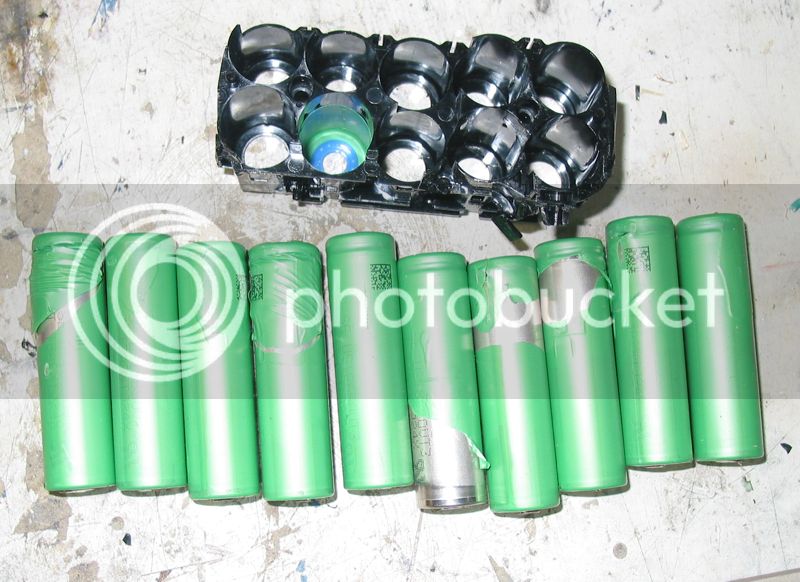yuyuyak
1 mW
I just finished cutting out pack 8 of 30. I've yet to see one of those laser welded packs (hope not to). What has worked best for me so far is scoring the nickel with a utility knive 4 or 5 times. After #7 I haven't sliced down into my thumb again yet 
Then I come up underneath with a precision screwdriver like they sell at the 99 cent stores, it breaks easily at the score. All this is done on the negative side only, I kept getting annoying sparks trying it on the positive side. I then score the positive side in the same manner. Because I first separated the negative side, the two paired cells are halfway loose from the pack and I can bend them around and simply bend once and the positive side (where they are still paired, but series'ed to the next set's negative terminals) comes loose from the adjoining pair of batteries. Rinse, repeat.
It all works pretty well except for the thumb thing. Don't think I'll ever approach 5 minutes though, but I'm not in a hurry, quality over speed for me. More or less leaving the positive side alone lessens the risk of damaging the insulator at this touchy interface. I take great care in dressing the nickel on the positive side.
I tried my Dremel but it was slower and just didn't work as well. But I don't really have a bit that is up to the task, next trip to the hardware store I'm going to pick up one of those blades & try it.
Then I come up underneath with a precision screwdriver like they sell at the 99 cent stores, it breaks easily at the score. All this is done on the negative side only, I kept getting annoying sparks trying it on the positive side. I then score the positive side in the same manner. Because I first separated the negative side, the two paired cells are halfway loose from the pack and I can bend them around and simply bend once and the positive side (where they are still paired, but series'ed to the next set's negative terminals) comes loose from the adjoining pair of batteries. Rinse, repeat.
It all works pretty well except for the thumb thing. Don't think I'll ever approach 5 minutes though, but I'm not in a hurry, quality over speed for me. More or less leaving the positive side alone lessens the risk of damaging the insulator at this touchy interface. I take great care in dressing the nickel on the positive side.
I tried my Dremel but it was slower and just didn't work as well. But I don't really have a bit that is up to the task, next trip to the hardware store I'm going to pick up one of those blades & try it.


